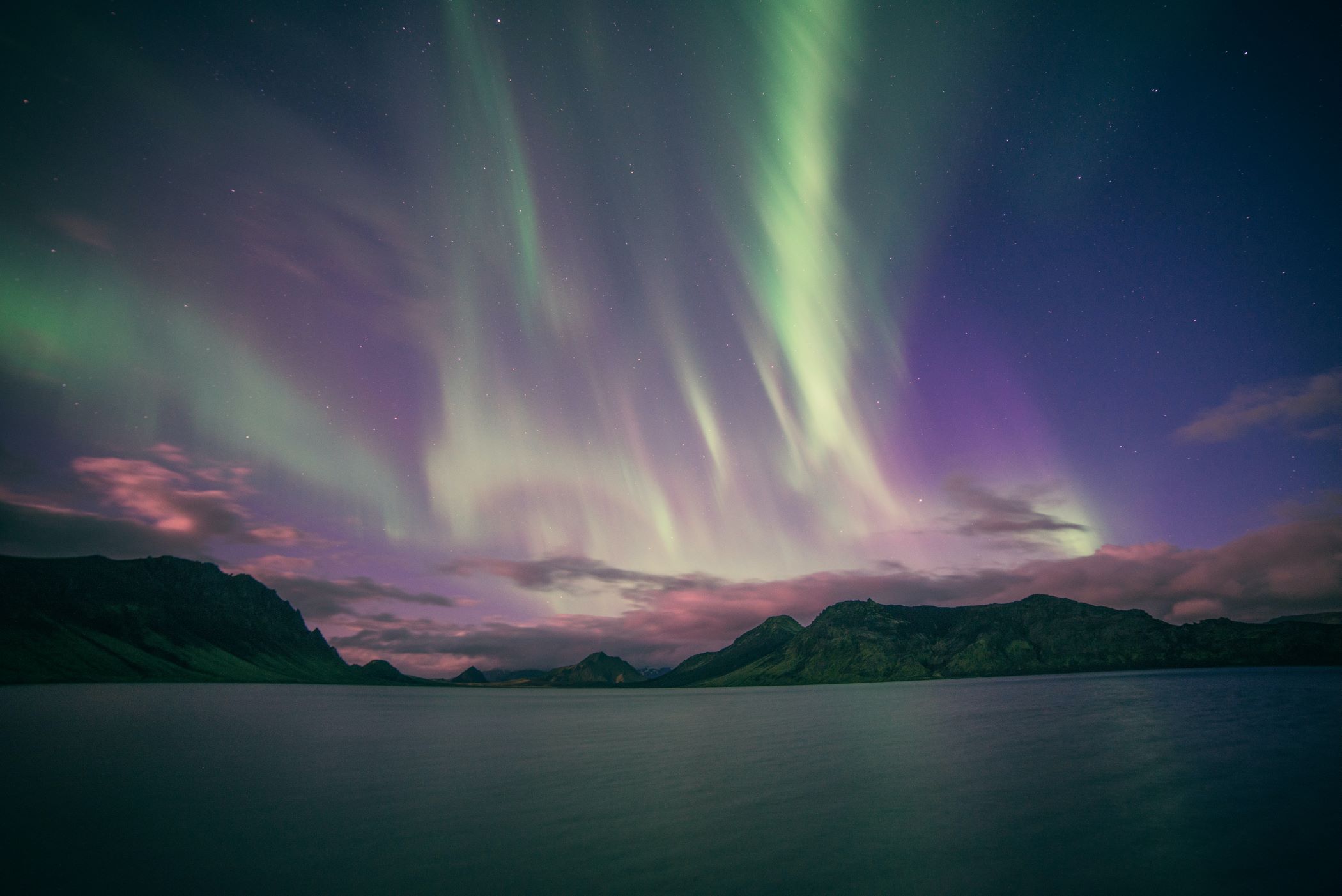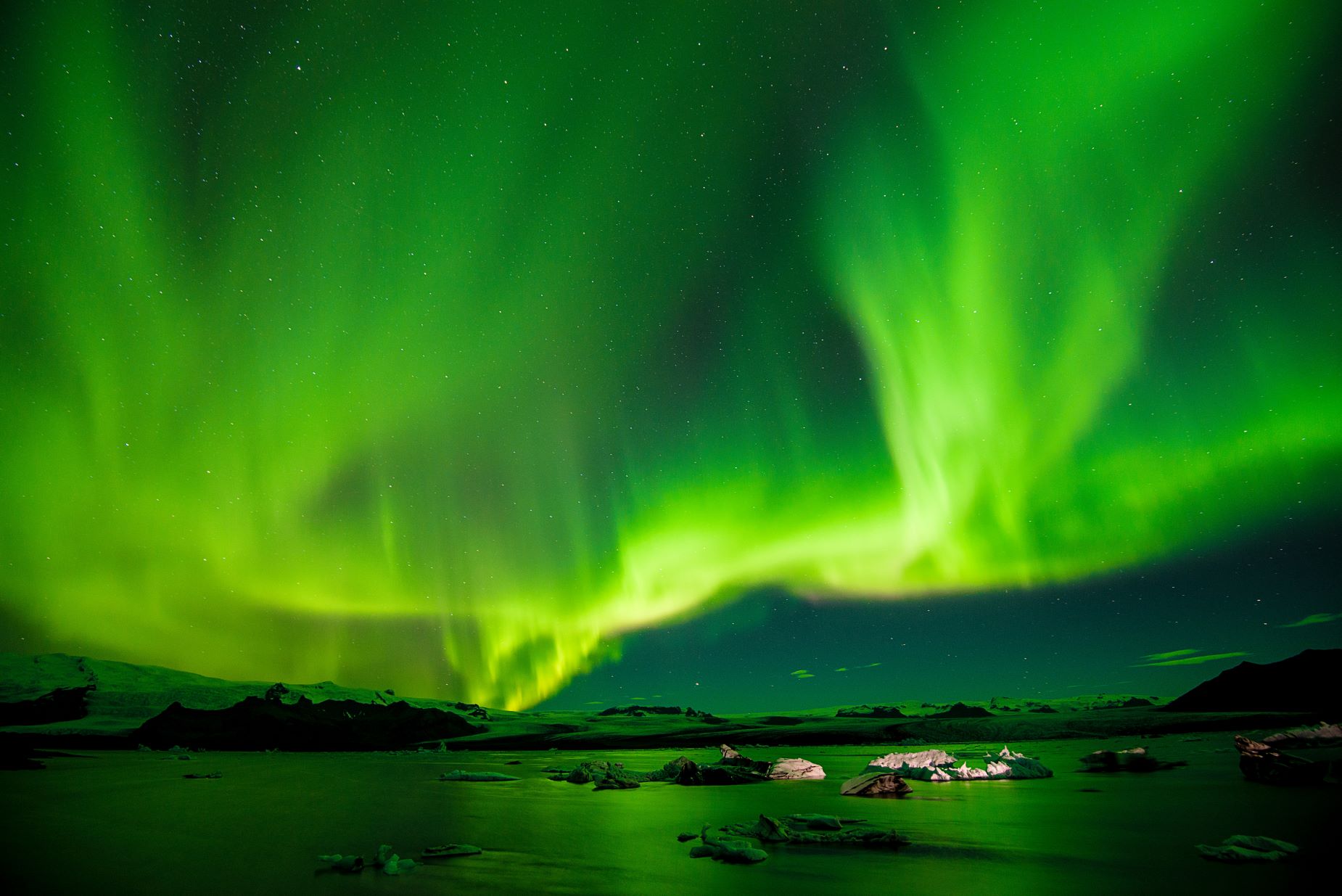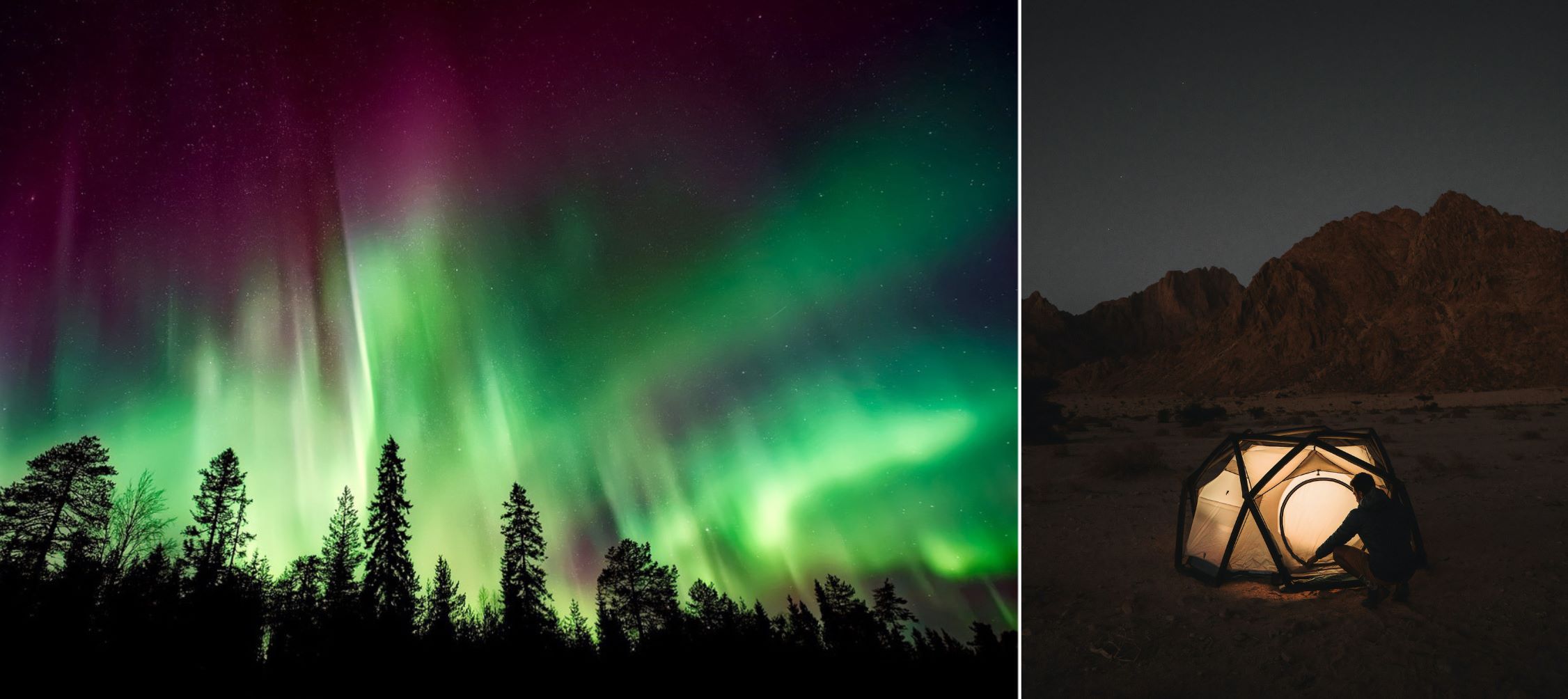Embarking on a journey to explore all the U.S. national parks presents an exciting opportunity for travelers, especially if they wish to witness the magic of the northern lights. Known as the aurora borealis, this captivating celestial display of dancing lights in the sky occurs when solar-charged particles slam into the Earth’s magnetic field, causing a luminous spectacle. Although encountering the aurora borealis remains uncertain, the prime locations for observing this wondrous phenomenon is within the auroral oval or high latitudes 65 to 70 degrees north. Therefore areas like Canada, and Scandinavia are ideal for viewing. However, under specific conditions with clear, dark skies, these awe-inspiring lights can even be seen at northern U.S. national parks (where the best time to see them is mid to late fall). So what are you waiting for? This is your chance to discover the magic of the northern lights at seven U.S. national parks. Grab your U.S. National Parks Passport Journal to capture your park memories, and let’s go chasing after aurora!
Denali National Park (Alaska)
Denali National Park, situated in a remote northern location with minimal light pollution, offers prime northern lights viewing conditions. The park covers around six million acres, but accessibility is challenging, with only a 15-mile section of the sole paved road open to private vehicles. To explore further, visitors must book a bus or travel on foot. For the best chances of witnessing the northern lights, plan your visit between August and April when long winter nights create optimal darkness. Be prepared for freezing temperatures, but the awe-inspiring auroral display is a rewarding sight for those willing to brave the conditions.
Best viewing dates: Fall, in particular late August
Glacier National Park (Montana)
Located in northern Montana, Glacier National Park stands out as one of the top spots for northern lights viewing in the Lower 48. This destination offers year-round potential for witnessing the aurora, with late fall and winter presenting the optimal period. To increase your chances, head to Lake McDonald or Goat Haunt, which provide unobstructed northern views.
Best viewing dates: November – March
Isle Royale National Park and Preserve (Michigan)
Isle Royale, one of the lesser-visited national parks, sits on an island in Lake Superior, just south of the Canadian border. Its distant northern location and next to no light pollution make it an excellent spot for viewing the northern lights. However, the park is closed during winter, a popular time for dark skies. For a chance to see the aurora, plan a visit in the fall or spring. Expect milder temperatures and increased activity of the lights near the equinoxes in September and March.
Best viewing dates: October and late April/early May

North Cascades National Park (Washington)
North Cascades National Park in Washington is among the least-visited U.S. national parks. With its majestic mountain peaks, numerous waterfalls, old-growth forests, and serene lakes, North Cascades National Park offers a breathtaking experience. While catching the northern lights here is rare, it has happened on several occasions.
Best viewing dates: November – March
Theodore Roosevelt National Park (North Dakota)
Named for one of the U.S.’ most beloved presidents, Theodore Roosevelt National Park covers over 70,000 acres of badlands in western North Dakota. The park has plenty of outdoor activities and although nightly sightings are not guaranteed, if you’re lucky, you have a chance to witness the northern lights.
Best viewing dates: late November – late March
Voyageurs National Park (Minnesota)
Only accessible by boat, Voyageurs National Park is a certified dark-sky park open year-round. Located in Minnesota near the Canadian border, its northern latitude increases the chances of seeing the northern lights during intense solar events.
Best viewing dates: November – April
Wrangell-St. Elias National Park and Preserve (Alaska)
The largest national park, visitors come to Wrangell-St. Elias National Park and Preserve for its remote location and pure beauty. The park is located near the auroral zone offering a fantastic opportunity to witness the northern lights.
Best viewing dates: September – April









